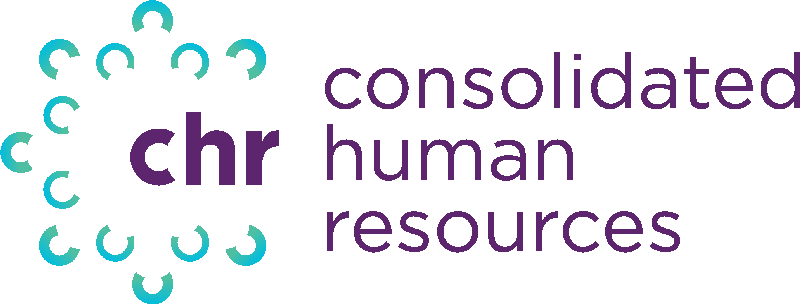Managing HR Compliance During the COVID-19 Crisis
As an employer, business owners must do everything possible to ensure the safety and health of all staff. In these challenging times, however, even the most cautious and OSHA and CDC-compliant business owner may get news that one of their employees is sick or has been potentially exposed to the virus. While government agencies like the Equal Employment Opportunity Commission (EEOC) and laws such as the Americans with Disabilities (ADA) are established to enforce anti-discrimination practices, employers are now afforded greater latitude to protect employees and the public-at-large.
Taking Temperatures of Employees
One precautionary step that some employers are using, to try to reduce the spread of the virus in the workplace, is measuring the body temperature of employees as they arrive at work.
Ordinarily, measuring an employee’s body temperature is considered a medical examination and should not be conducted by employers unless it is job-related and consistent with business necessity. However, in the context of this pandemic, the CDC and state and location health authorities have acknowledged the extraordinary community spread of COVID-1. As such, the EEOC has issued guidance to allow employers to measure employees’ body temperature. However, even given this expanded latitude, the EEOC has stated that employers should be aware some people with COVID-19 do not have a fever, and some people who have a fever, may not have the virus.
To limit the strength of any potential claims of discrimination or privacy consideration infractions, it is imperative that any employer who decides to implement a temperature testing procedure, have a detailed screening plan and a standardized process in place. Such plan/process should include:
- Asking employees whether they have been in contact with anyone diagnosed with or exhibiting symptoms of COVID-19. You cannot ask whether an employee is residing with a family member who is diagnosed with or exhibiting symptoms of COVID-19.
- Ensuring temperature measurement is being done on a nondiscriminatory basis.
- Ensuring employees waiting in line are maintaining social distancing (6 feet apart).
- Utilizing a “no-contact” thermometer.
- Ensuring person taking the temperature has been provided training and on how to properly read and disinfect thermometer.
- Keeping a signed record of temperatures and ensure all information or any other COVID-19 related medical information is retained in a confidential manner and will not be discussed or released to other employees.
- Ensuring that the person taking the temperature is protected against possible exposure, i.e., face shield, face mask, gloves.
- Determining whether any specific State compliance notices must be provided to employees.
If an employee refuses to have their temperature taken, employers should be understanding and reiterate that the procedure is a safety precaution to protect all workers as much as possible. However, if the employee continues to refuse to have their temperature taken, the employee may be sent home. An employee has the right to refuse to have temperature taken, but the employer can also refuse to allow them on the premises. Employees with an elevated temperature should also be sent home immediately.
Practice Social Distancing
During this virus outbreak, it is crucial to ensure that you and your staff follow the best practice recommendations, rules and regulations outlined by the CDC and other health organizations. Proper handwashing and staying home when ill are key. Working remotely, when possible, is also another way to reduce employee interactions. Since individuals may be asymptomatic and still have or be a carrier of the virus, the CDC and the World Health Organization has stated that allowing individuals to wear masks will help reduce the possibility of the contagion being transferred from person to person.
In general, however, “social distancing” has been identified as a key element in potentially reducing the continuing spread of this disease.
- Avoid in-person meetings. Use online conferencing, email or phone when possible, even when people are in the same business.
- Do not congregate in workrooms, pantries, lunchrooms or other areas where people socialize. Keep six feet apart when possible.
- Avoid public transportation or go early/late to avoid rush hour crowding.
Employees Calling-Out Sick
If an employee calls-out sick, you may ask whether the absence is due to COVID-19 related symptoms, i.e., shortness of breath, fever, cough, pain/pressure in the chest). You should not ask employees about any other conditions. If the employee indicates they are experiencing symptoms associated with COVID-19, advise the employee to stay home and seek medical attention. A lot of health providers now have tele-health and video conferencing vehicles to aid in the immediate service of patients.
Given the rapid spread of the virus, employees should not be allowed back to work without some type of medical clearance, i.e., form, stamp or note for medical practitioner indicating the employee is fit for duty.
Employee Refuses to Come to Work for Fear of Infection
Under OSHA, workers have the right to refuse to work if they believe in good faith that the employer is exposing them to imminent danger because the conditions or practices in the place of employment are such that a danger exists which can be reasonably expected to cause death or serious physical harm. However, the virus has caused a lot of fear and individuals, particularly those considered as “high risk” are very concerned about potential exposure. While you should be diligent in cleaning and disinfecting the workplace, it is suggested to allow employees to use whatever paid time off they have available. At this time, however, there is no job-protection for individuals who have not been diagnosed with symptoms or who have not been placed on quarantine by a healthcare provider.
Employee Has Been Diagnosed With COVID-19
Upon notification that an employee has been diagnosed with COVID-19, you need to act quickly to minimize the risk of the disease spreading throughout your work environment. Employers are legally liable for both employees and nonemployees infected in the workplace if sufficient and appropriate action is not taken.
- If possible, ask the infected employee which coworkers they have been in close contact with within the prior two weeks.
- Alert those who have been in close contact with the employee as soon as possible. Even though it is a pandemic, the Americans with Disabilities Act (ADA) still requires that employers maintain the confidentiality of the employee who tested positive and not release their name.
- State that “Someone in our workplace has tested positive for COVID-19 and they have identified you as a close contact. We suggest that you go home and self-isolate yourself and monitor yourself for any systems and contact a medical professional”. Do not provide any medical advice.
- Once you have alerted the close contacts, you need to communicate the news to the affected department. Continue to respect the confidentiality of the employee who tested positive and the individuals identified as close contacts. In general, you can say, “A person in this department tested positive and is now self-isolating. We have spoken with the individuals identified as close contact and they also are self-isolating. If you were not already spoken with, then you are not one who was indicated as a close contact. We know this is not an easy time and we are doing all we can to ensure the safety and health of everyone here”.
One important note: Make it a point to follow up with the employee who tested positive and their close contacts. When at all possible, the follow up communication should be a member of management. During these challenging times, a member of senior management showing concern can make a world of difference to anyone affected by this virus and illustrates that you care about and are concerned about your employees.

